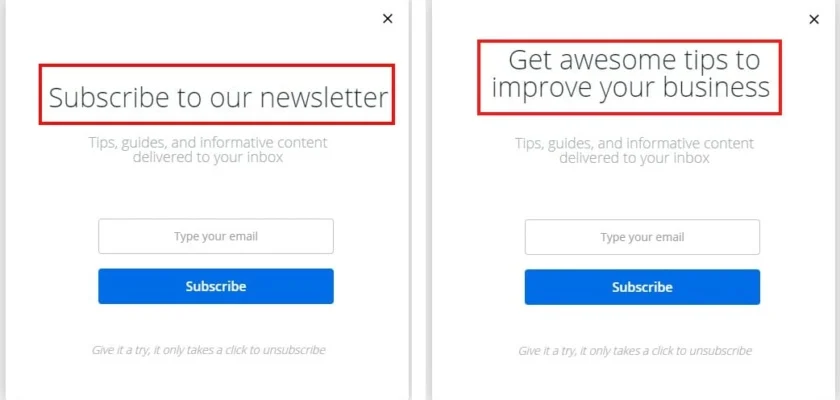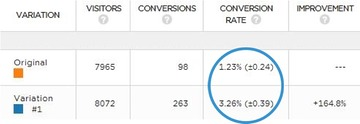In the world of affiliate marketing, staying ahead of the competition requires constant experimentation and optimization. This is where A/B testing comes in. Also known as split testing, A/B testing is a method that allows you to compare different aspects of your marketing assets and affiliate campaigns.
Around 60% of organizations find A/B testing to be highly valuable for optimizing their conversion rates.

By conducting A/B tests, affiliate marketers can unlock valuable insights that ensure an increase in conversion rates, affiliate commissions, and stronger affiliate partnerships.
But how exactly do you go about conducting split affiliate marketing testing? This blog will explore the key steps and best practices of A/B testing so you can maximize your affiliate marketing success.
Define the Objective and Identify Elements to Test
Before anything else, know that you should define a clear objective for your affiliate marketing testing. Is it to increase click-through rates? Improve conversion rates? Understanding your objective will guide your testing method and ensure the results align with your desired outcomes.
Once you have an objective, determine the specific elements to test. In affiliate marketing, there are key elements you can experiment with to optimize campaigns:
Call-to-Action (CTA)
Whether on mobile apps or website pages, the Call-to-Action button is a critical element that influences user behavior. You should test different variations of your CTA text, design, color, size, and placement to discover the most compelling combination that drives desired actions.

Use actionable verbs on your CTA button, too. In the above example, “Get A Demo” sounds more actionable and specific. This can easily guide your visitors to take the desired action.
Besides the CTA, test other aspects, including your content copywriting. For example, you may want to test different headlines, the way you structure your content, and so on. That brings us to the next element to test.
Landing Page Layout
The layout and structure of your landing page can impact user engagement and conversion rates. Experiment with different designs, headings, images, forms, and content layouts to provide the best user experience for your visitors.
Offer or Promotion
Testing different affiliate marketing offers or promotions can have a substantial impact on affiliate conversions. Negotiate with your affiliate managers to get coupon codes and other freebies. Then test the freebies to see which ones your target audience prefers.
Audience Segmentation
If you want to increase your affiliate income, consider segmenting your audience based on demographics, interests, or purchasing behavior for your affiliate email marketing campaigns.
Experiment with different types of email content and these audience segments. This is important, especially if you have a large affiliate website promoting multiple products. You want to personalize your email communications and promote products each segment will be interested in.
Don’t forget to use email verification tools to clean up your list so your messages reach your intended recipients in the first place. You can try tools like Clearout for AI-based real-time email verification to enhance email deliverability and ensure more accurate A/B testing results.
Pro Tip: Focus on one key element at a time when conducting A/B tests. This will help you isolate the effect of each variable and understand its influence on the desired outcome.
Create Variations for Testing
Once you’ve defined your objective and identified the elements you want to test in your affiliate marketing campaigns, it’s time to create variations for testing.
Start by brainstorming different ideas for each element you want to test. For instance, if you’re testing the call-to-action (CTA) button, consider variations in the text, color, size, shape, or placement. If you’re testing ad copy, explore different ad creatives.

To ensure meaningful results, create variations that differ significantly from each other. This way, you can clearly understand the impact of each change on user behavior and campaign performance.
Use A/B testing tools like AB Tasty or VWO to streamline the process. These tools provide intuitive interfaces that allow you to design and deploy different versions of your marketing assets, track performance metrics, and analyze results.
Establish a testing plan that allows for sufficient data collection. The duration can vary based on the amount of traffic or conversions your campaigns receive. As a rule of thumb, run tests for at least one full business cycle, which could be a week or longer.
Conduct the A/B Test and Analyze the Results
After creating variations for testing in your affiliate marketing campaigns, it’s time to conduct the A/B test and analyze the results.
To begin, select a segment of your audience to participate in the affiliate marketing testing. This segment should be representative of your target audience and large enough to generate statistically significant results. Ensure the test groups are randomly assigned to minimize bias.
Next, run the test simultaneously, exposing each group to a different variation. It’s important to monitor the performance metrics closely during this phase. Such metrics include click-through rates, conversion rates, average order value, and any other key performance indicators (KPIs) relevant to your objective.
Check this out.

In the image above, the conversion rates of the two variations are compared. The original conversion rate (1.23%) was lower than variant #1’s conversion rate (3.26%).
Consider the confidence level or the statistical significance, too. It tells you whether the changes made to a webpage, design, or any other element being tested have a significant impact on the desired outcome. As a rule of thumb, you should keep testing your variations until you reach a confidence level of 95% to 99%.
In addition to quantitative metrics, consider qualitative feedback from users or customers. This data can provide valuable context to your numbers.
Conclusion
Affiliate marketing testing helps you optimize your campaigns, reduce bounce rates, increase conversions, and maximize your affiliate commissions.
By defining clear objectives, identifying elements to test, creating variations, and analyzing results, you gain valuable insights into what resonates best with your audience.
Iterate and make testing an ongoing process to stay ahead in the dynamic affiliate marketing landscape.
Want to build an affiliate program for your store? With GoAffPro, you can easily set up and manage your program. Check out our app: GoAffPro
Leave a Reply